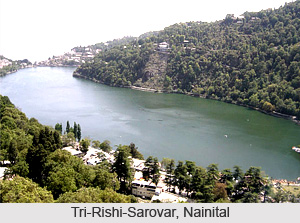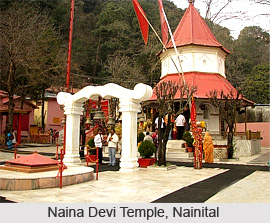 History of Nainital district, Uttarakhand, can be traced back to the period of British settlements in India. In the year 1815 Kumaon and Garhwal regions were occupied by the British rulers. On 8th May 1815, E. Gardiner was appointed as Kumaon division`s commissioner. The second commissioner of Kumaon division, Mr. G.W. Traill, arrived in 1817 and carried out the second revenue settlement of Kumaon. He was the first European who visited Nainital but his visit was not much popularized owing to the religious sanctity of the place.
History of Nainital district, Uttarakhand, can be traced back to the period of British settlements in India. In the year 1815 Kumaon and Garhwal regions were occupied by the British rulers. On 8th May 1815, E. Gardiner was appointed as Kumaon division`s commissioner. The second commissioner of Kumaon division, Mr. G.W. Traill, arrived in 1817 and carried out the second revenue settlement of Kumaon. He was the first European who visited Nainital but his visit was not much popularized owing to the religious sanctity of the place.
Mythological History of Nainital District
Indian mythology states that the Tri-Rishi-Sarovar (lake of the three sages) in Nainital was formed by the sages Pulaha, Pulastya and Atri who reached the place on a penitential pilgrimage. For quenching their thirst, the sages dug a hole there and drew water from the sacred Mansarovar lake of Tibet and filled it. For this, Nainital is also called as `Manas Khand` of the `Skanda Purana`. Apart from this, the place is amongst the 64 sites where parts of charred body of Sati fell when her corpse was carried around by Lord Shiva in grief. It is believed that the left eye (Naina) of Sati fell at this place from which the patron deity of the town emerged. Myths also say that the lake of Nainital resembles an emerald eye. The temple of Naina Devi stands at the northern end of the lake. This gave the town its name, Nainital, derived from `Naina` and `tal`, which means lake.

Modern History of Nainital District
In 1839 an English businessman known as P. Barron reached the place with his friend who was an avid hunter. They arrived at the hills of Nainital for hunting and got lost along their journey. While tracing their way back they eventually discovered a placid lake. The enchanting lake and the magnificent natural beauty of the place pleased Barron so much that he built a European Colony along the bank of the lake and left behind his sugar business. Afterwards, in an issue of `Englishman Calcutta` published about Nanaital and the discovery of the lake near Almora.
According to historical records, by 1847, Naitinal emerged as a popular hill resort attracting tourists from distant places. 3rd October 1850 marks the day of the formation of Nainital Municipal Board which became the second Municipal Board of North Western Provinces. To promote the formation of a town in the place, the administration of the land was transferred to the rich Sah community of Almora. The transfer was done on the condition of building houses on the land. Naitinal was made the summer seat of the North Western Provinces in the year 1862. This summer capital then started expanding remarkably with the construction of spectacular bungalows throughout the town along with other developments such as rest houses, marketing areas, clubs, recreation centres and many more. Several other administrative units and the secretariat were also formed. Naitinal also emerged as an educational hub much preferred by the British people.






